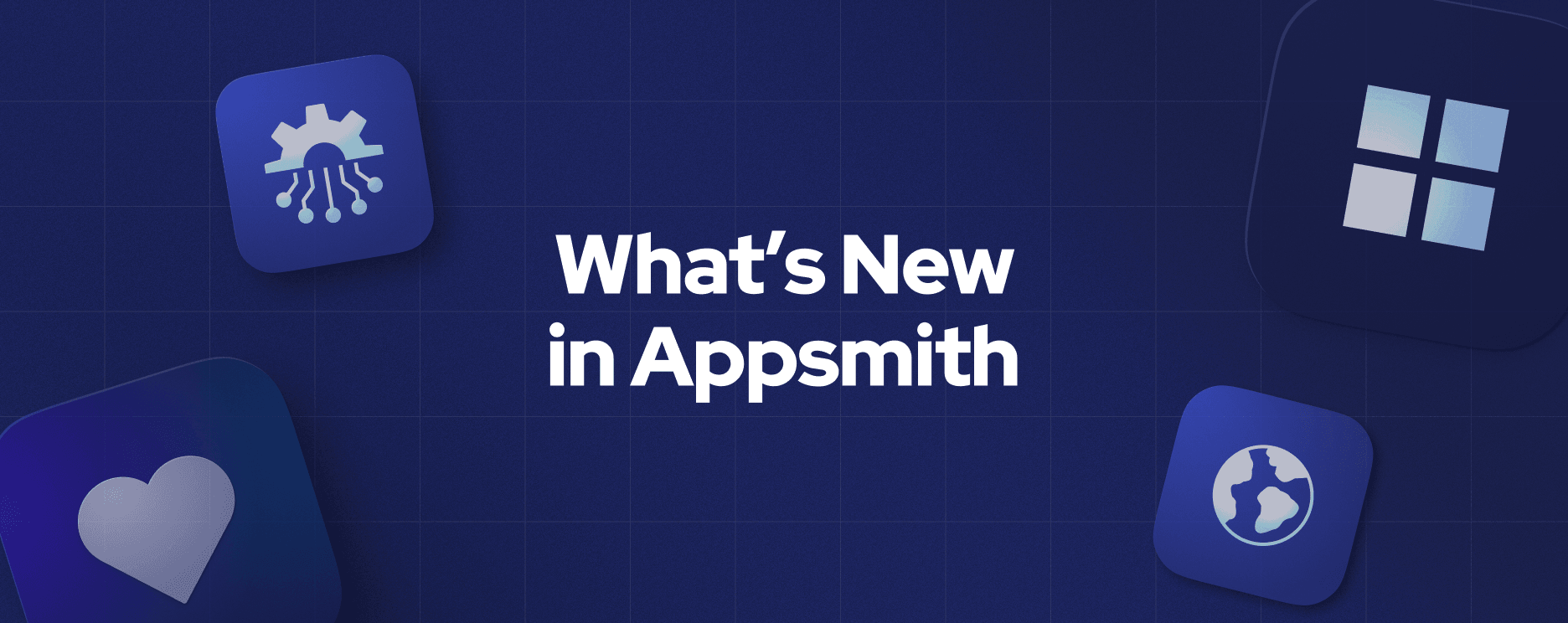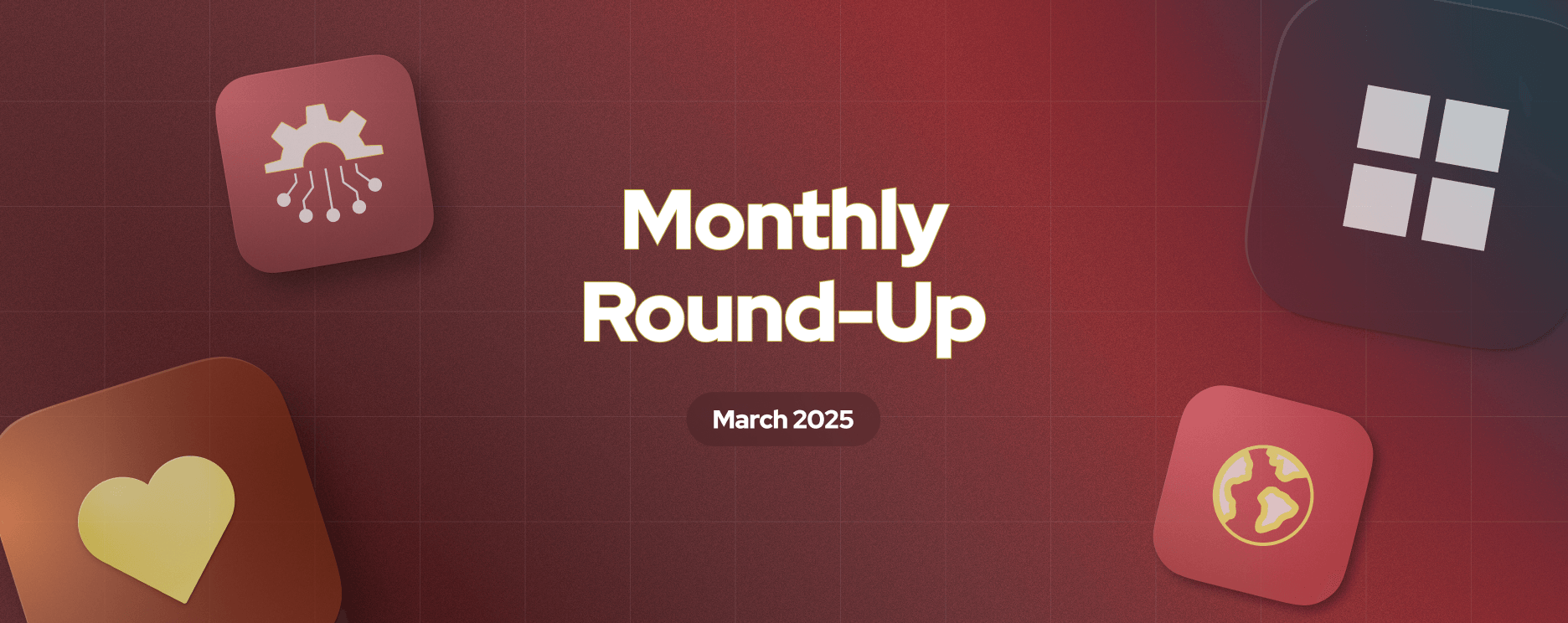Performance Enhancements, Auto-Commit, Terraform Modules, and More!


Welcome to July's monthly round-up! This month, we have many exciting updates, improvements, and new features to share with you. Dive in to discover what's new and what's coming soon at Appsmith!
New things in Appsmith
Performance and stability improvements
At Appsmith, performance and stability are top priorities. In this spirit, we recently undertook significant efforts to improve the First Page Load (FPL) time and overall stability of our platform.
Our initial focus was on the consolidated view API, which is crucial as it delivers users' profile information, tenants' details, and feature flags before the UI fully loads. To improve this, we optimized the response time by reducing redundant database calls and leveraging Redis for faster data access. Additionally, implemented in-memory caching of branding logos and eliminated unnecessary network calls.
The impact of these changes: the consolidated view API that saw a 67% improvement in response time, dropping from 150ms to 48ms. Similarly, the edit API performance improved by 70%.
These enhancements were not limited to performance alone; they also bolstered stability. By ensuring that the pods in our Kubernetes setup remain in a healthy state and reducing the frequency of pod restarts, we achieved a 45% performance improvement in our API endpoints.
This optimization effort ensures that Appsmith runs smoothly, providing users with a faster, more reliable experience.
Auto commit in Git
We are introducing Auto-commit to everyone using Git in Appsmith. When you upgrade your Appsmith instance, it often requires migrations in both the frontend and backend. These migrations appear as uncommitted changes in the Git editor, making it challenging to distinguish between them and manual changes you’ve made to your applications. Sometimes, the migration changes apply only to the currently opened page in the editor.
Enabling auto-commit resolves these issues by automatically committing version upgrade changes to a non-protected branch as soon as you open it in your app. If the app is not actively in use, the auto-commit will not take place, and the changes will not be committed.
This smart automation simplifies the user experience, ensuring your Git history remains clear and focused on your work.
Table widget improvements

Display label in table select cell
One of the significant improvements we've made to the table widget is the way it handles select columns. Previously, when users clicked on a value within a select column, the table displayed the raw value rather than the label.
Now, with this enhancement, we are ensuring the appropriate label is displayed right on the table cell when any of the select column labels are clicked. This maintains the underlying values but shows the correct label, aligning the table widget's behavior with the standard on select widgets.
Additionally, we've introduced a feature flag that allows users to toggle the table cell label value functionality, providing greater flexibility and control. This update keeps your data presentation clear and consistent.
Introducing the sortBy property to select columns in table widget
Navigating through data can sometimes be tricky, especially when it comes to sorting by labels instead of underlying values. Particularly when dealing with priority lists or any select columns with labels such as "high," "medium," and "low". By default, the table widget sorted these columns based on their values (e.g., 1, 2, 3), which could led to confusion.
We improved the experience with sortBy property for select columns. This enhancement allows users to choose whether the column should be sorted by its label or its value, providing a more intuitive and flexible sorting mechanism. This change ensures that the table widget behaves in a way that aligns more closely with your expectations, making data navigation clearer and more straightforward.
Sniping mode for module to bind to existing and new widgets
We improved the sniping mode for module binding to existing and new widgets. Previously, users had to manually bind the query module to the widget directly in the property pane.
With Sniping mode, this process is now automated, allowing for a more intuitive and efficient workflow. This update not only simplifies data binding but also ensures that your applications are more adaptable and easier to manage.
Announcing Appsmith Terraform Modules
We are excited to announce the launch of the first version of our Terraform modules for Amazon Web Services (AWS) and Google Cloud Platform (GCP). This makes Appsmith deployment more accessible and efficient for architects and DevOps teams.
Traditionally, deploying Appsmith required manually provisioning the necessary infrastructure resources such as containers, filesystems, and databases—a time-consuming and error-prone process.
Our new Terraform modules provide a standardized and automated way to provision these resources on AWS and GCP. With just a single command, you can create the entire infrastructure stack needed to run Appsmith in a repeatable and consistent manner.
The Terraform modules for Appsmith are available on the official Appsmith GitHub repository.
Try out workflows beta

We’re expanding the Appsmith Workflows beta program! You’re invited to exclusive early access to our new Workflows feature. Get started here and explore this new addition in Appsmith.
Small but impactful features and improvements
Google Sheets plugin update
- We added the Google Sheets plugin—a clear selection functionality for the dropdown, allowing users to easily clear all selected options. Contribution by a community member
Google Sheets handling of authentication status in data source management
- Fixed a specific issue with Google Sheets integration where selected sheets were not loading correctly.
If you missed these cool Appsmith events
Building a Starter Template for the OpenAI Assistant API - Joseph explains in this workshop the difference between ChatGPT, Custom GPTs, & OpenAI Assistants. And how you can integrate with the Assistant API while building a starter template for integrating an OpenAI Assistant into your own app!
Generating Colored Tags for displaying Airtable API Data - Colored Tags, sometimes called chips or pills, are a great way to display a short list of values. And it adds some style to the UI and makes it easier to scan for repeats. In this workshop, you’ll learn how to generate your own colored tags using JavaScript, and explore a few different options for adding colors.
Appsmith LiveCoding : AI-Driven Automated Form Creation - Learn how to auto-generate forms using AI for enterprise applications using Appsmith along with OpenAI and JSONForm.
Build Your Own Markdown Editor with Appsmith - Dive into Appsmith's custom widgets and explore how to integrate powerful JavaScript libraries to create a feature-rich markdown editor.
#JustPublished things
Less is More: How Reusability in Appsmith Helps You Build More with Less Code - An introduction to the powerful reusability features native to the Appsmith platform, how they help your workflow, and how enterprises can leverage them at scale.
Packages and Modules in Appsmith: Share Queries, JavaScript, and Widgets across Your Apps - At Appsmith, we’ve recently shifted our focus more toward enterprise use cases with packages and modules. This article explores what this means for you.
Building a Shopify Admin Panel: A Step by Step Guide - Learn how to build a custom Shopify admin panel using Appsmith.
Intro to Javascript in Appsmith - This guide covers the various places and syntaxes for using JavaScript in Appsmith. It is intended for users who have a basic understanding of JSON and JavaScript functions, and focuses more on practical applications.
Appsmith Best Practices: Creating Efficient, Easy-To-Maintain Apps - Learn best practices for creating efficient and easy-to-maintain apps using Appsmith. This article delves into the importance of keeping things simple, the concept of building mini-apps with multiple pages, and the benefits of creating multiple purpose-built apps.
More things are coming soon
This is where we wrap up the highlights from July. To make the most of Appsmith and all these improvements, we encourage you to upgrade to v1.34 of Appsmith. You can check our release log for a complete list of new features and improvements in Appsmith.
An important event is coming in September; make sure to join us for our upcoming webinar "The Shift to Self-Hosted Software Solutions." Dive into why more and more businesses are shifting from public cloud SaaS applications to custom-built tools hosted in their own cloud or infrastructure. The webinar will be held on September 26th at 10 AM ET.
Catch you in the next update! 🫰
Related Blog Posts


